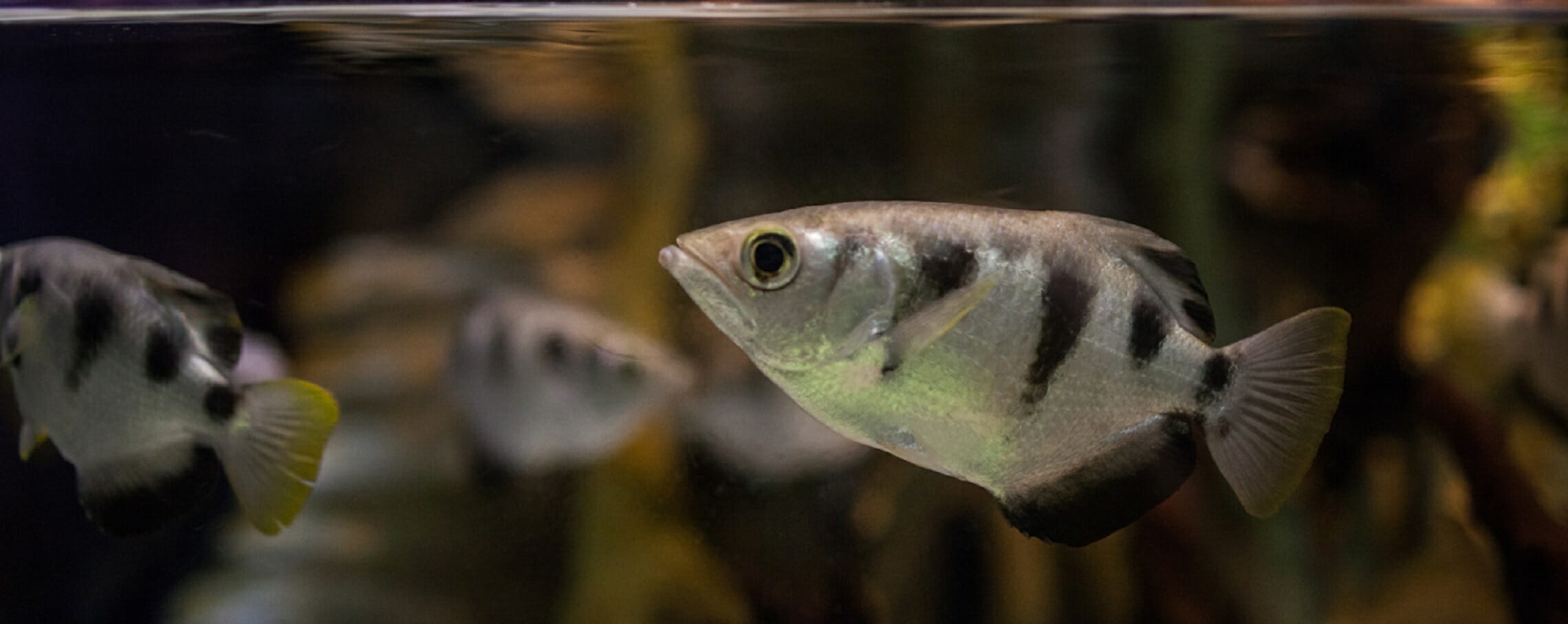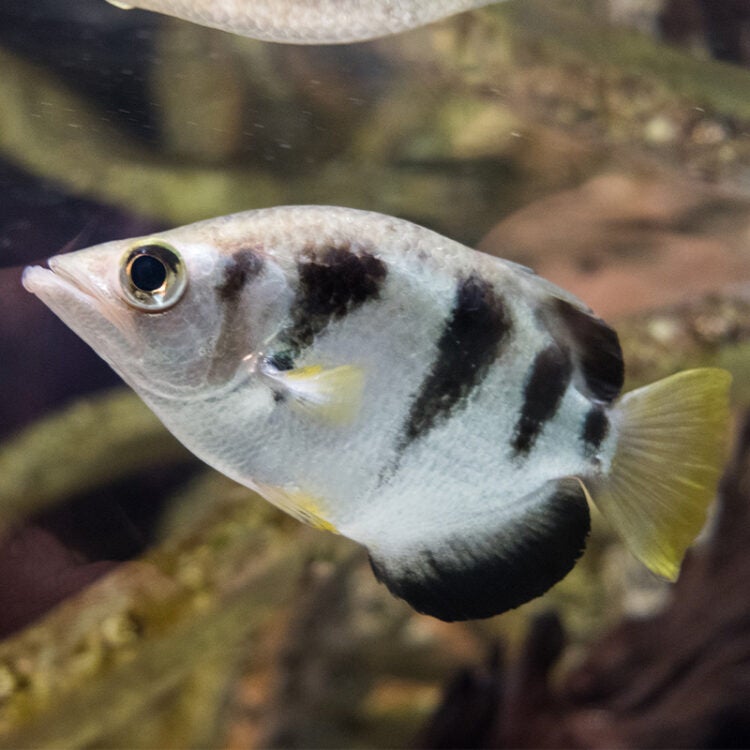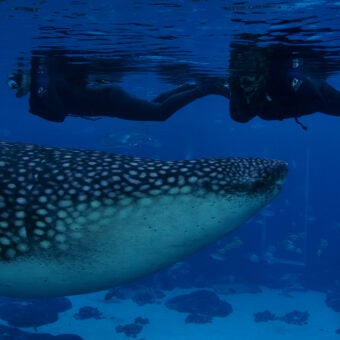-
Size
8 to 12 inches (20-30cm) -
Diet
Insects and plant material -
Range
Indonesia and Australia -
Habitat
Brackish mangrove estuaries
Physical Characteristics
- Small, deep-bodied fish with an upturned mouth. The lower jaw extends beyond the upper.
- Coloration is silver-grey dorsally fading lighter on the underside. There are several dark bands along their sides.
- Common length of about 8 inches (20 cm), but occasionally individuals as long as 12 inches (30 cm) have been reported.
Animal Fun Fact
Banded archerfish have very accurate aim and have a shooting range of up to 60 inches!
Diet / Feeding
- Feeds at the surface during the daytime on floating debris which includes insects and plant material.
- Renowned for its ability to “shoot down” insect prey by expelling beads of water from its mouth with considerable force.
- Their shooting range is about 60 inches (150 cm).
- Uses its jaw muscles to pump water through a tube formed by its tongue and a unique channel in the roof of its mouth. The stream of water droplets knocks its prey into the water where it is easily devoured.
- Can compensate for visual refraction while looking from beneath the water surface to a target in the air above.
- Very accurate aim is due to special adaptations in the eye which give it an unusually large area on the retina in which it can focus an image and still have the image be clear.
Range / Habitat
- Occurs from India to the Philippines and Indonesia, the Solomon Islands, Papua New Guinea and Northern Australia.
- Found primarily in brackish mangrove estuaries, but also penetrates adjacent rivers and small streams.
- Also reported to occur near overhanging vegetation on reefs.
Reproduction & Growth
- Archerfish become mature around one to two years of age.
- They are believed to swim from their inshore brackish water areas out to coral reefs for spawning. Broadcast spawning is triggered by the rains at the end of tropical dry spells where the female can lay up to 150,000 eggs at one time.
Conservation Status
- “Least Concern” on the IUCN Red List.







